Uzbekistan

Buxhara , Uzbekistan


Buxhara , Uzbekistan


.

17 July 2024
As winter slowly fades and nature begins to bloom, Azerbaijan comes alive with the vibrant spirit of Novruz Holiday - one of the most meaningful and beloved holidays in the country. Deeply rooted in ancient Zoroastrian traditions, Novruz (meaning "new day") marks the arrival of spring and the Persian New Year, usually celebrated on March 20 or 21, coinciding with the vernal equinox. But in Azerbaijan, it’s more than just a date on the calendar – it’s a soulful celebration of life, renewal, and togetherness, cherished for generations.
HOLIDAY
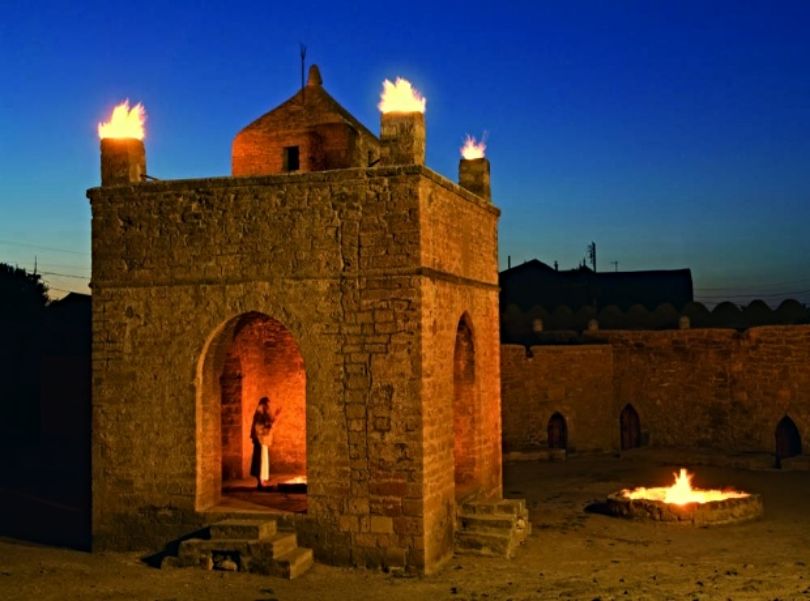
Fidan

16 April 2011
Baku, the dazzling capital of Azerbaijan, is often called the “Land of Fire” — a name rooted in the country’s ancient connection to flames and natural gas. Just outside the city, you can witness Yanar Dag, a hillside that has been burning with a natural gas-fed flame for centuries. Nearby, the Ateshgah Fire Temple, once a sacred site for fire-worshipping Zoroastrians, offers a glimpse into this mystical past. Today, these eternal flames are symbols of Azerbaijan’s unique identity, where nature, history, and spirituality converge in dramatic fashion. A visit to Baku is not just a city tour — it’s a journey into a place where fire has shaped culture, belief, and legend.
GEOLOGICAL PHENOMENON

.

14 February 2000
The Sheki Khan’s Palace, located in the historic town of Sheki in northwestern Azerbaijan, is one of the finest examples of 18th-century Azerbaijani architecture. Built in 1762 as a summer residence for the ruling khans, the palace is renowned for its intricate decorative work, including colorful stained-glass windows, detailed wall paintings, and elaborate wooden carvings—all crafted without the use of nails or glue. Set against the backdrop of the Caucasus Mountains, the building reflects a blend of Persian, Ottoman, and local styles. Today, the palace is a UNESCO World Heritage Site and serves as a key symbol of Azerbaijan’s artistic and architectural heritage. It’s a place that quietly invites you to slow down, look closer, and appreciate the beauty of the cultural richness and history of the region.
RECOGNIZED HERITAGE

.

21 September 1996
Azerbaijan is home to
nearly half of the world’s mud volcanoes, and the most accessible are just a short drive from Baku.
These surreal, bubbling landscapes feel almost extraterrestrial — a must-see
for nature lovers and adventure seekers. Nearby lies the Gobustan
National Park, a UNESCO World Heritage Site, where you’ll
discover over 6,000 ancient petroglyphs carved into rock faces, some dating back more than
10,000 years. These remarkable carvings depict scenes of prehistoric life —
hunting, dancing, and rituals — offering a rare window into human history.
Combined, Gobustan and the mud volcanoes make for a fascinating day trip that
blends geology, archaeology, and natural beauty.
EARTH’S UNUSUAL WONDERS
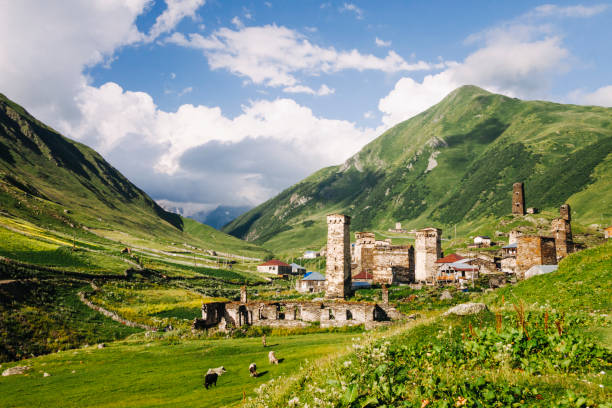
.

1 October 2025
Why unique:
Recognized by UNESCO as one of the highest continuously inhabited villages in Europe (2,100 m).
Surrounded by the Caucasus Mountains and glaciers, including Mount Shkhara (5,193 m, Georgia’s highest peak).
Famous for its Svan defensive towers (9th–12th century) – they were homes, watchtowers, and fortresses all in one.
Experience:
Walking through Ushguli feels like a medieval time travel—stone houses, towers, and villagers still living traditional Svan life.
Hiking trails start from the village, including one to Shkhara Glacier.
Best for: People who love authentic culture, epic mountain views, and adventure.
Getting there:
From Mestia (main town of Svaneti), it’s about 45 km, usually 2–3 hours by 4x4.
Roads are rough but the scenery is stunning.
EARTH’S UNUSUAL WONDERS
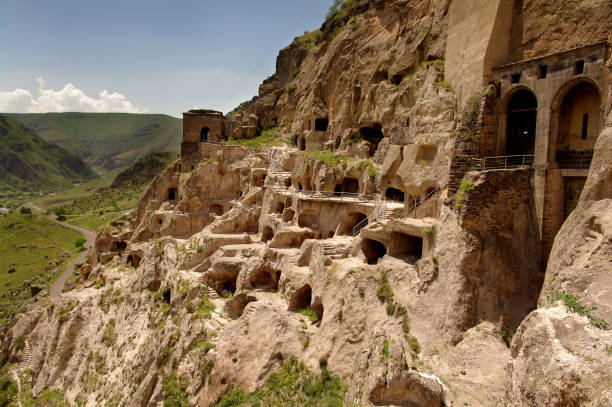
.

1 October 2025
Why unique:
A 12th-century cave city, carved directly into the Erusheti Mountain.
Originally built by Queen Tamar as both a monastery and a fortress to protect Georgia from invaders.
At its peak, it had over 6,000 rooms, 25 wine cellars, churches, and a throne hall—all inside the mountain.
Special highlights:
The Church of the Dormition with colorful frescoes (still preserved after 800 years).
Secret tunnels connecting different chambers (some are open to tourists).
Best for: History lovers, explorers, and those who enjoy unusual architecture.
Getting there:
Located in Samtskhe-Javakheti region, about 250 km from Tbilisi (4–5 hour drive).
Usually visited along with Rabati Castle (Akhaltsikhe
EARTH’S UNUSUAL WONDERS

.

2 October 2025
Why unique:
A magical canyon with emerald-green water flowing between limestone rocks.
You can take a boat ride through the canyon (about 15–20 minutes) and see waterfalls, caves, and overhanging cliffs.
Used to be a bathing place for local nobles centuries ago.
Special highlights:
Walking trails with wooden bridges give amazing views of the gorge.
The contrast of green water and forest makes it look like a fantasy movie set.
Best for: Families, couples, nature photographers, and anyone who loves peaceful but beautiful spots.
Getting there:
Near Kutaisi, about 45 km away (1 hour drive).
Often combined with Prometheus Cave or Okatse Canyon
EARTH’S UNUSUAL WONDERS

.

1 October 2025
Why unique:
One of the most iconic squares in the world, called the “Pearl of the East.”
Surrounded by three massive madrasahs (Islamic schools): Ulugh Beg, Sher-Dor, and Tilya-Kori.
Covered with blue and gold mosaics, intricate calligraphy, and towering arches.
Special highlights:
At night, the square lights up with a magical glow.
Inside the madrasahs, you’ll find courtyards, domes, and small shops.
Best for: History lovers, architecture enthusiasts, photographers.
Getting there:
Located in central Samarkand, easily accessible from Tashkent (by high-speed train ~2 hours).
EARTH’S UNUSUAL WONDERS

.

1 October 2025
Why unique:
A UNESCO World Heritage Site – the best-preserved medieval walled city in Central Asia.
Walking inside feels like entering a living museum.
Surrounded by massive mud-brick walls, with minarets, mosques, and caravanserais.
Special highlights:
Kalta Minor Minaret – a short, fat turquoise-tiled minaret (legend says it was left unfinished).
Juma Mosque with 213 carved wooden columns (some from the 10th century).
Sunset from the city walls – unforgettable.
Best for: Travelers who want to step back into the Silk Road era.
Getting there:
In western Uzbekistan, near Urgench. You can fly from Tashkent (~1.5 hours) or take a train
EARTH’S UNUSUAL WONDERS
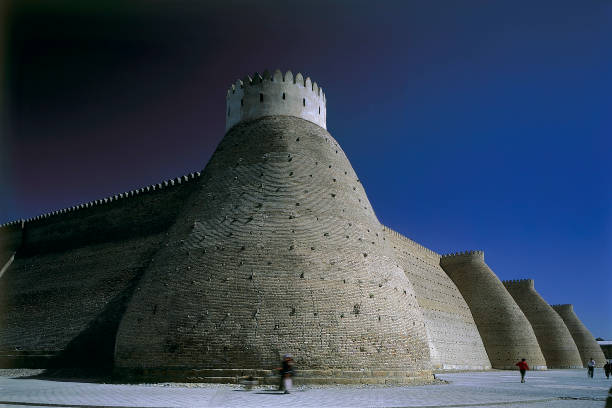
.

1 October 2025
Why unique:
Once the capital of the Bukhara Emirate and a major Silk Road hub.
The Ark Fortress was the residence of Bukhara’s rulers for centuries.
The old town is packed with mosques, madrasahs, and bazaars.
Special highlights:
Ark Fortress – massive walls, throne room, and old palaces.
Poi Kalyan Complex – huge minaret (once called the “Tower of Death” because criminals were thrown off it).
Traditional bazaars under domed roofs (still active today).
Best for: History buffs, culture lovers, and those who enjoy wandering old streets.
Getting there:
Located between Samarkand and Khiva.
Connected by train and flights from Tashkent
EARTH’S UNUSUAL WONDERS

.

1 October 2025
Why unique:
A 154 km–long canyon, often called “Kazakhstan’s Grand Canyon.”
Famous for the Valley of Castles – towers and rock formations shaped like fortresses.
Unlike the U.S. Grand Canyon, it’s smaller but much less crowded and feels untouched.
Special highlights:
Hiking among surreal red-orange cliffs.
Sunrise/sunset photography is breathtaking.
Rafting on the Charyn River for adventure seekers.
Best for: Nature lovers, hikers, photographers.
Getting there: About 200 km east of Almaty (~3 hours by car)
EARTH’S UNUSUAL WONDERS

.

1 October 2025
Why unique:
A high-altitude alpine lake (2,511 m) with unreal turquoise water that changes color depending on sunlight.
Surrounded by snow-capped peaks of the Tien Shan mountains.
It’s also part of Almaty’s drinking water supply, so swimming is not allowed (which helps preserve its beauty).
Special highlights:
Stunning mountain reflections in the lake.
Great spot for hiking and picnics.
You may see wildlife like ibex or golden eagles.
Best for: Day-trippers from Almaty, hikers, and those who love alpine landscapes.
Getting there: Only 30 km from Almaty (~1 hour by car)
EARTH’S UNUSUAL WONDERS
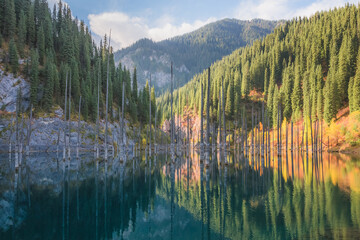
.

1 October 2025
Why unique:
A mystical lake formed after an earthquake in 1911 that flooded a forest valley.
The trunks of submerged spruce trees still stick out of the turquoise water, creating a hauntingly beautiful scene.
Underwater, the trees are preserved, looking like an upside-down ghost forest.
Special highlights:
A rare sight – a “drowned forest” that you won’t see in many places worldwide.
Popular for hiking, camping, and even diving for adventurers.
Best for: Explorers who love unusual, almost surreal landscapes.
Getting there: Located in Kolsai Lakes National Park, about 300 km from Almaty (~5–6 hours by car).
EARTH’S UNUSUAL WONDERS